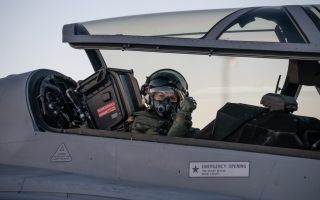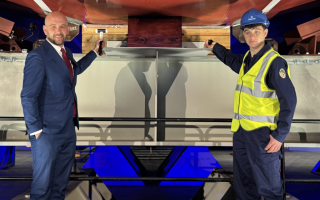Progress made as Navy's new ballistic missile sub and Type 26 frigate take shape
The back section of HMS Belfast has been moved into a construction hall in Glasgow, while a section of submarine HMS Dreadnought has been moved through BAE Systems' Barrow yard.
The City class frigate's aft block was slowly positioned in the brand-new Janet Harvey Hall at BAE Systems' shipyard in Govan.
Eight frigates of this type are being created, and the first three – HMS Belfast, Glasgow and Cardiff – are scheduled to enter service before 2030.
The other five vessels, including HMS Birmingham, Sheffield, Newcastle, Edinburgh and London, will follow in the next decade.
The 6,900-tonne ships, which 208 people can crew, will be used for warfighting, maritime security, and international engagement, according to the Royal Navy.
"Protecting the United Kingdom and its interests from evolving global threats requires state-of-the-art vessels like the Type 26 frigate and the investment by our industry partner, BAE Systems, underscores the commitment to equipping our Armed Forces," Stephen Charlick, Ministry of Defence, Defence Equipment and Support Type 26 resident project officer, said as the construction hall was opened to help build the vessels.
The Type 26 frigates are expected to remain on the water until the 2060s, as they have been designed to have a service life of more than a quarter of a century.
Meanwhile, a part of HMS Dreadnought, the first of the Dreadnought class submarines, has been escorted through BAE Systems' Barrow yard.
BAE Systems Maritime released footage showing the bullet-shaped submarine section being carried through the shipyard in northern England.
The Dreadnought class submarines will replace the ageing Vanguard class submarines as the future of the UK's Continuous At Sea Deterrent, meaning they will be able to fire Trident 2 D5 missiles.
The submarines will also be equipped to launch Spearfish heavyweight medium-range torpedoes from four 533mm torpedo tubes.
The vessel, which will weigh an astronomical 17,200 tonnes, will have 130 crew members, including a trio of chefs and a doctor.









